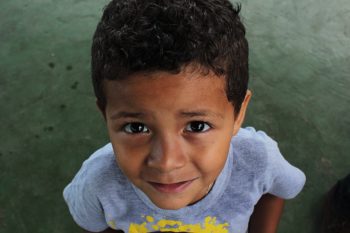One of the most profound gifts I’ve witnessed while working with The Imagine Project is watching a child’s face and body language shift from despair and helplessness to hope. When they begin writing about a challenging story in their lives, their body language is sad and sunken. But once their story is on the table, acknowledged, and embraced, then a child can begin to see how far they’ve come, how strong and resilient they really are, and they begin to believe they can handle life—they have hope.
Hope is critical to all of us, particularly a child. Children seem to embrace hope more easily than some adults. Some might say it’s their lack of seeing the world with wounded eyes, but honestly, they see more than we think. Behind their incident looking eyes there is a secret, something hidden in their hearts that pulls them back from life, keeps them from knowing how amazing they truly are. It may be a small, even silly secret like something negative that someone said—or it can be bigger like a shameful parent or feeling left out. No matter the size, a child needs to find the hope within the issue so they can move forward in life and not be held back by false beliefs.
Hope gives us positive emotion, it makes our bodies and brains feel pleasure. Hope boosts our immune systems keeping us healthy and balanced. Basically hope makes us happy! Which is why cultivating hope is critical to our youth.
The Imagine Project writing process is a practice that cultivates hope in a child or teen. When a child is given the opportunity to speak their truth by writing a story about something difficult that has happened in their life using the word Imagine, it gives them permission to let that story go and write a new story in it’s place. I see it time and time again, a child sits in a classroom frustrated, even angry they have to write—and then they begin. They almost can’t write fast enough—getting out emotion that’s been stuck or hiding. As this flow of emotion begins there are occasional tears while they write, but mostly they just want to get it out. The writing helps them find a voice that’s been pushed down inside that no one has been listening to. Their body language begins to change—they find a more comfortable way/place to sit to continue, they get up and sharpen their pencils and come back and write more. Hope begins. They are often given the opportunity to read their stories out loud. The younger ones—up to about 7th grade—all want to read their story, the older ones, not so much. The compassion for each other’s stories floods the room—hope is cultivated. When a child hears a story of another child they see strength in that child and in turn in themselves—if they can do it so can I! Friendships are made—hope is cultivated.
Remember, just because a child has a happy face, doesn’t mean they don’t have a story that needs support. Having them write and maybe even talk about their story in a classroom or at home will help them see and feel hope in their lives. They will recognize their own resilience, and in a group/classroom setting, the resilience of others. Hope cultivated again.
Please try The Imagine Project in your home or classroom. The journals are all available for free at www.theimagineproject.org. You will love it and your child/students will too! And the added bonus, they will begin to love to write!!





